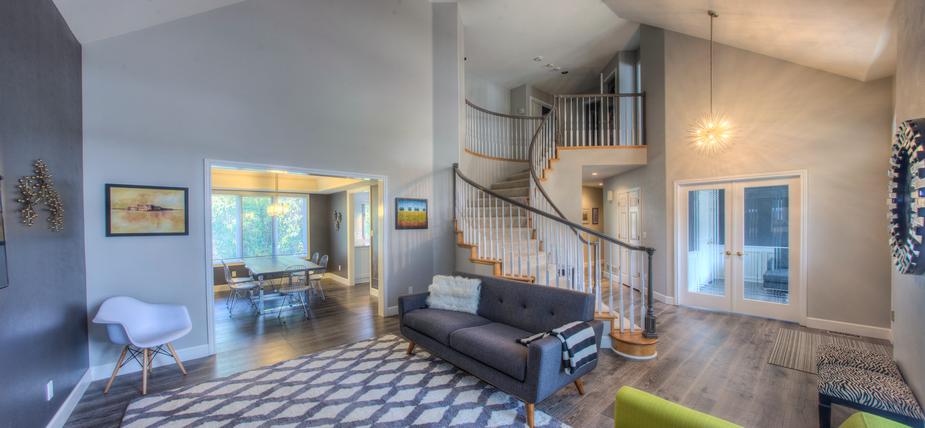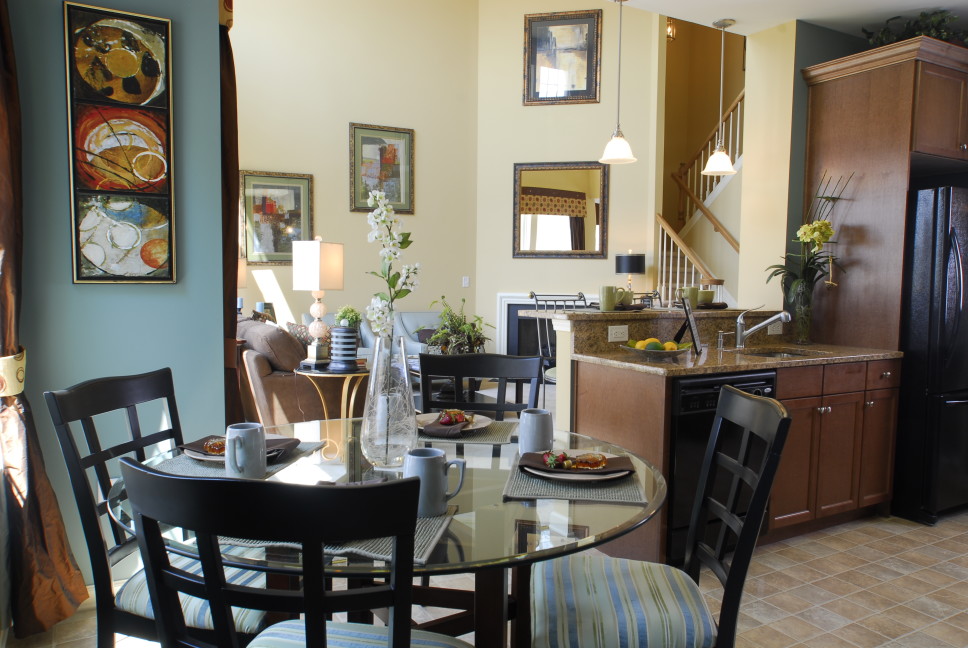(Photo by Christa Grover from Burst)
Open floor plans are nothing new. The floor plans started to dominate in the 1970s with a trend toward more contemporary styling and by the mid-90s it was hard to find any new construction that didn’t boast about its open floor plan.
However, it’s hard to think of a time when Americans have carried out so much of every aspect of our lives at home. From working and schooling to lounging, eating, and entertaining, we’ve all had to rethink the way we use the spaces in our homes. To be honest, with all of us at home together sharing rooms while also trying to carve out some space of our own, most have found that open floor plans may be a little less appealing.
What are Open Floor Plans?
The term ‘open concept’ or ‘open floor plan’ is used to describe homes that combine two or more traditional-use rooms to form a much larger space. This eliminates dividing walls and usually encourages the kitchen to be at the center of the home’s design. Fewer walls allows for better traffic flow — and makes it easier for parents to keep an eye on their children — and also offers flexibility for more kinds of furniture. Open concept homes also usually have more natural light throughout.
The idea of open concept really is what distinguishes most older homes from newer ones. But sometimes what’s old really does come back around and in style, because the design benefits we loved about open floor plans may have become drawbacks in our 2021 mindset. Lack of privacy, poor sound control, and clutter are just some of the aspects of open concept homes that have been exposed and exacerbated during the quarantine like never before.
Perhaps most jarring is the privacy issue. With open floor plans, whether you’re in the living room, kitchen, or dining room, everyone knows what everyone else is doing. Privacy becomes a rare commodity when almost everything is within someone’s sight line. The need to be able to close a door, to be free of someone else’s conference call or video chat, or, just to be in your own space has become recognized as a need for mental balance.
Along with privacy comes the issue of noise. The acoustics in open floor plans can be a real problem – especially when everyone is doing their conference calls, school lessons, or entertainment at the same time. Sounds from the kitchen, like the dishwasher, blender, and coffee grinder also bother anyone trying to use the living area when these two rooms are open to each other.
Speaking of the kitchen, there can be no secret ingredients here! An open concept home makes cooking an audience activity, with everyone able to watch as dinner is prepared. This may be fine for the family, but is less desirable when entertaining guests. And don’t forget that less barriers also mean smells aren’t as blocked, so food odors also tend to spill over and settle into your sofa upholstery!
Open spaces are harder to keep clean with messes tracked from room to room and stuff filling all of the available space. And there are fewer doors to close to conceal the mess, so it may be harder to make them look tidy. They generally have less storage space entirely, and they definitely have fewer places for wall hanging and artistic displays.
Lastly, open floor plans are generally less energy efficient since larger spaces are more costly to heat and cool. And as open floor plans can’t be split into HVAC zones, homeowners wind up paying to heat and cool the entire area rather than just the occupied spaces.
Because of all of this, there is a movement to return to home design in which the floorpan is divided into some smaller rooms, since buyers are looking for specific, dedicated spaces for work as well as favorite hobbies like crafts, sewing, or reading.
Buyers now think it is ok to have single purpose rooms — even if the purpose you give them isn’t what might have been intended. Family meals together at the table would be great, but if a home has both a kitchen and a dedicated dining room, perhaps the family will eat at the more casual kitchen table while repurposing the dining room into a school room or a temporary home office.
Niches and alcoves are also coveted as they can serve to separate the space and create nooks for specific activities — like reading or playtime — while remaining connected to adjoining rooms. Their coziness is attractive, but they also provide a degree of noise buffering.
The last year has truly changed what we need from our homes. While we have spent so much time at home, privacy, quiet, cleanliness, and variety have been highly prized, so breaking up the ever-preset open floor plan is a design refresh many homeowners — and homebuyers — may be craving.




Leave a Reply